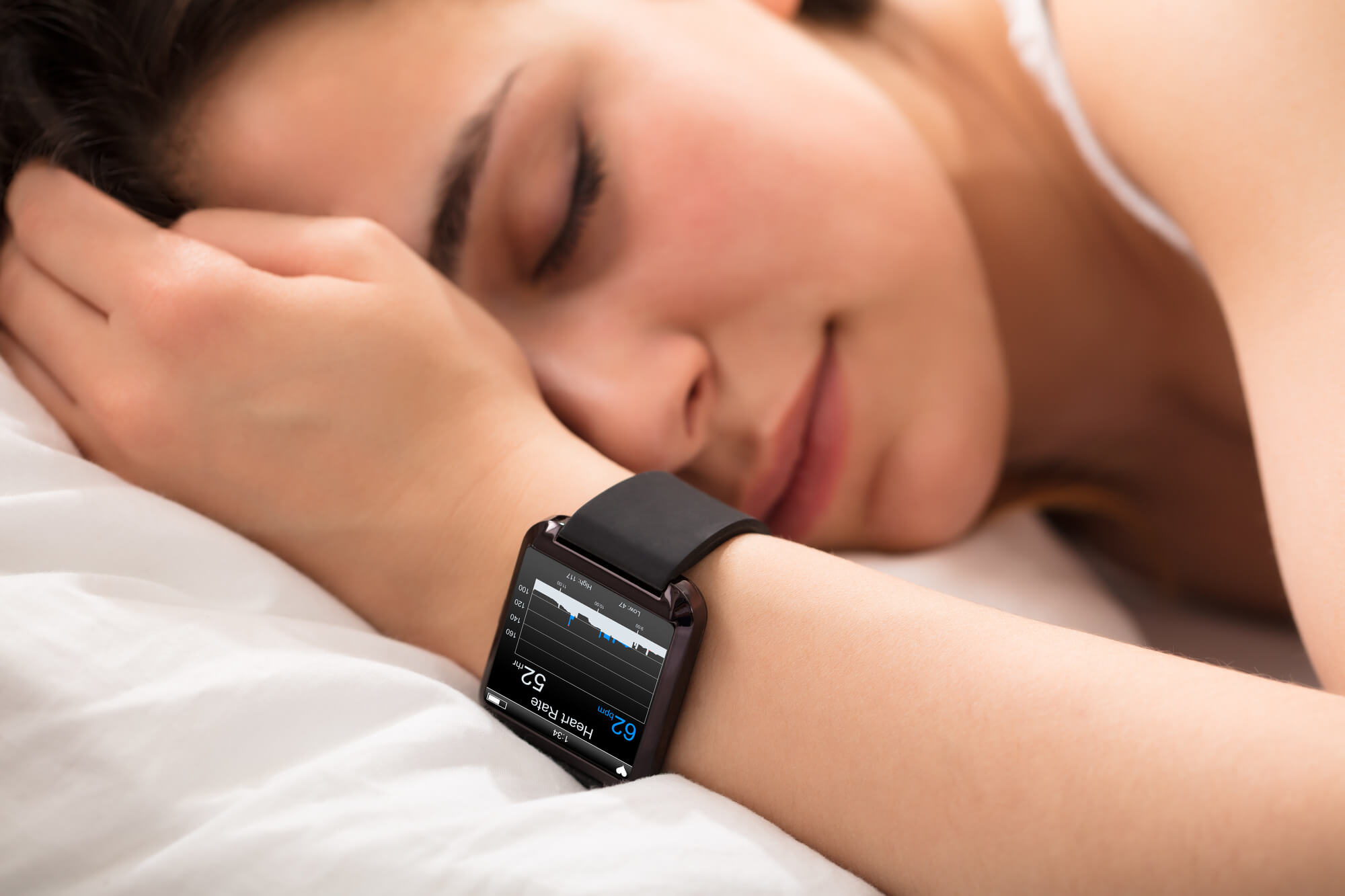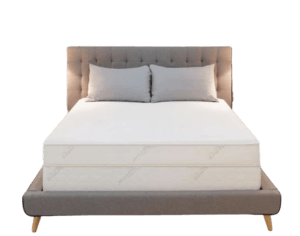A variety of sleep monitoring devices hit the market around 2012. No matter the branding, from FitBit to Apple Watch to the cleverly brand-name-word-association assisted Sleep Watch, each of these devices advertised sleep monitoring as a benefit to humanity.
The general idea behind a sleep watch comes from Polysomnography, the monitoring of sleep patterns. These watches created a portable and easy way for the common person to see their sleep patterns and make adjustments.
Since then, each year a bevy of articles have been released talking about sleep cycles. Some of these also talk about sleep monitoring. And of course, there is always the nod to whichever niche tech provides the most benefit.
Regardless of what specific brand or device a person picks, understanding how a sleep watch works helps make an informed decision.
We’ll talk about the science behind sleep monitoring and why you should get on-board with this valuable technology.
Sleep Science
As mentioned, Polysomnography comprises the machines and technology used to study sleep patterns. The use of an EEG measures activity in the brain. Basically, the electrodes report voltage fluctuations and current flow.
After years of using these devices, the American Academy of Sleep Medicine arrived at the conclusion that five stages of sleep exist. They later amended that down to just four: N1, N2, N3, and REM.
N1-N3 waves increase in amplitude and go lower frequency. This represents the deep sleep cycles. After that REM (rapid eye movement) begins. The whole process takes about 90 minutes. This becomes the basis of the sleep cycle.
A sleep cycle then needs to be repeated about 5-6 times a night to represent a full and restful period.
The actual maps of sleep cycles are called hypnograms. They show peaks and valleys that represent the wave amplitudes.
Hypnograms created by EEG and sleep watches look very different. That is largely because the two types of monitoring use different technology.
The precision of the instruments used by scientists in Polysomnography work better than anything we can currently build into something as small as a watch. But, as science and tech have done before, that gap is shrinking.
Using sleep watch or visiting a sleep clinic both work on the same basic principle: to record patterns and use that information to use adjustments. The veracity of the data stops being an issue at a point.
Yes, a sleep cycle isn’t exactly 90 minutes. No, we don’t always fall asleep quickly or easily in that 15-minute window. Claims of a device to radically change your sleep by themselves should be worrying.
A device that provides information so that you can make informed decisions about your own habits and activities? That doesn’t require clinical accuracy.
Handy online programs like sleep calculators can help you plan better sleep just by understanding this first principle.
Avoiding problems with sleep and understanding that sleep cycles exist should be enough to help you avoid the negative effects of sleep deprivation. What are the negative effects?
Let’s cover that.
Sleep Deprivation
Sleep deprivation doesn’t just create a problem for focus and feeling less than 100%. Prolonged sleep deprivation has effects on the immune system, the heart, and the brain.
Lack of sleep stimulates cravings for high fat and sugar foods. You either rest or you need more chemical energy, at least, that is what your brain thinks.
This handy infographic gives a snapshot of the underlying issues.
Sleep deprivation causes chronic issues and takes time to develop. A few bad nights of sleep won’t chop years off of your life, but getting to the root of a sleep problem early does extend far into the future.
The harshest effects of sleep deprivation will often be felt in your personal life before your health shows an issue. Lack of ability to participate fully at work and home tend to be more obvious and immediate issues for most.
Avoiding sleep issues isn’t a nicety, it is a cornerstone of preventive medicine.
Sleep Watch
So that takes us back to the question at hand, what is a sleep watch? Well, a sleep watch monitors sleep cycles. This helps create a record of the quality, consistency, and length of sleep cycles.
Sleep devices of this sort work by monitoring heart rate and movement. First, the device creates a baseline for when sleep occurs by waiting for your heart rate to slow to a certain point and for general movement to cease for a period of time.
A good sleep watch doesn’t just look for lack of movement. Accelerometers and velocity measuring software can tell the difference between a gentle turn and a more violent twitch.
Once it detects that you are asleep it collects data on when you move again. This data gets analyzed and recorded by software which makes determinations from a simple turn to a toss-and-turn sleeplessness.
The efficacy and the veracity of the information differ from one app and device to the next, but the principle remains the same.
Some sleep watches provide an overall sleep score. These make a form of sense within the given software but doesn’t’ have a direct scientific analog. Trying to improve those scores will help your health, though.
A sleep watch may offer alarm options. Some of these will wake you up at estimated light sleep periods, this helps you to feel more alert and refreshed. Waking up from a deeper sleep can feel like coming out of a well.
Waking up at the right time is one of the key elements of sleep cycle studies.
The data output from different devices will also be different, but most report the same categories of information. This sleep data creates the picture of your nightly sleep cycles.
Once the data has been collected the interpretation becomes more important.
Sleep Data
The data collected usually informs you how long you were asleep and how many times during sleep you were interrupted. From there a graph may be provided which will show the relative measurements of your N1, N2, N3, and REM phases.
The best way to use the data from a sleep watch involves making changes to your habits. You want to understand what you do during the day and how you go to sleep and see the influence in the patterns.
This can take several weeks to understand each part of your schedule and behavior that affects the pattern. Part of the point of a sleep watch is to give you individualized data tables.
Making common sense or recommended changes may or may not work, but with data to back up each change, you will know how it works for you. Creating a personal sleep plan also gives you control of your health instead of following route directions.
For some people, this may lead to a need to fix up their sleeping environment. This can include a change of lights and sound emitting devices. It might be about the quality of your mattress.
Solutions
Taking a week for each change to be seen in the sleep pattern is recommended. This gives you a proper data set from the sleep watch to see if a change was effective or if you just slept different from Monday to Tuesday nights.
Two weeks provides the most robust data, but for some, a single week will be enough to see differences.
Start by setting a strict wake-up time without snooze buttons. This gives you the best endpoint so y0ou can adjust your start point. That will help you see the effects and patterns of the sleep cycles.
Winding down and being ready for sleep has an immense effect.
Just like waking up at your deepest sleep makes waking up hard, trying to go to sleep when you are at the most alert makes a gap between laying down and actually sleeping.
other tips include being ready for sleep by eliminating activities that will get you back up. Hitting the bathroom in the middle of the night interrupts sleep cycles. BPets and partners can also add strain that needs to be negotiated.
Remember, you want to change up as few variables as possible from each stage of the to best see the effects on your patterns. Sleep cycles work as a numbers game. The average sleep cycles of 90 minutes per for a night is about 5.
Replacing sleep cycles with naps can have a positive effect. Don’t fall too far into the idea of replacing sleep though, because that is an averages game. Sleeping all day once a week hardly benefits you at 48 hours of awake.
Human math doesn’t just follow the numbers.
Sleep Easy
Getting proper sleep doesn’t happen by chance these days. A lot of work goes into making everything right for sleep to be as regenerative and effective as possible. To stay up on all the current information about sleep and sleep technologies, check out our blog.
Don’t skimp out on sleep. You might have been born doing it, but everyone could use some help to maximize their effectiveness in the demanding and hectic modern world.


